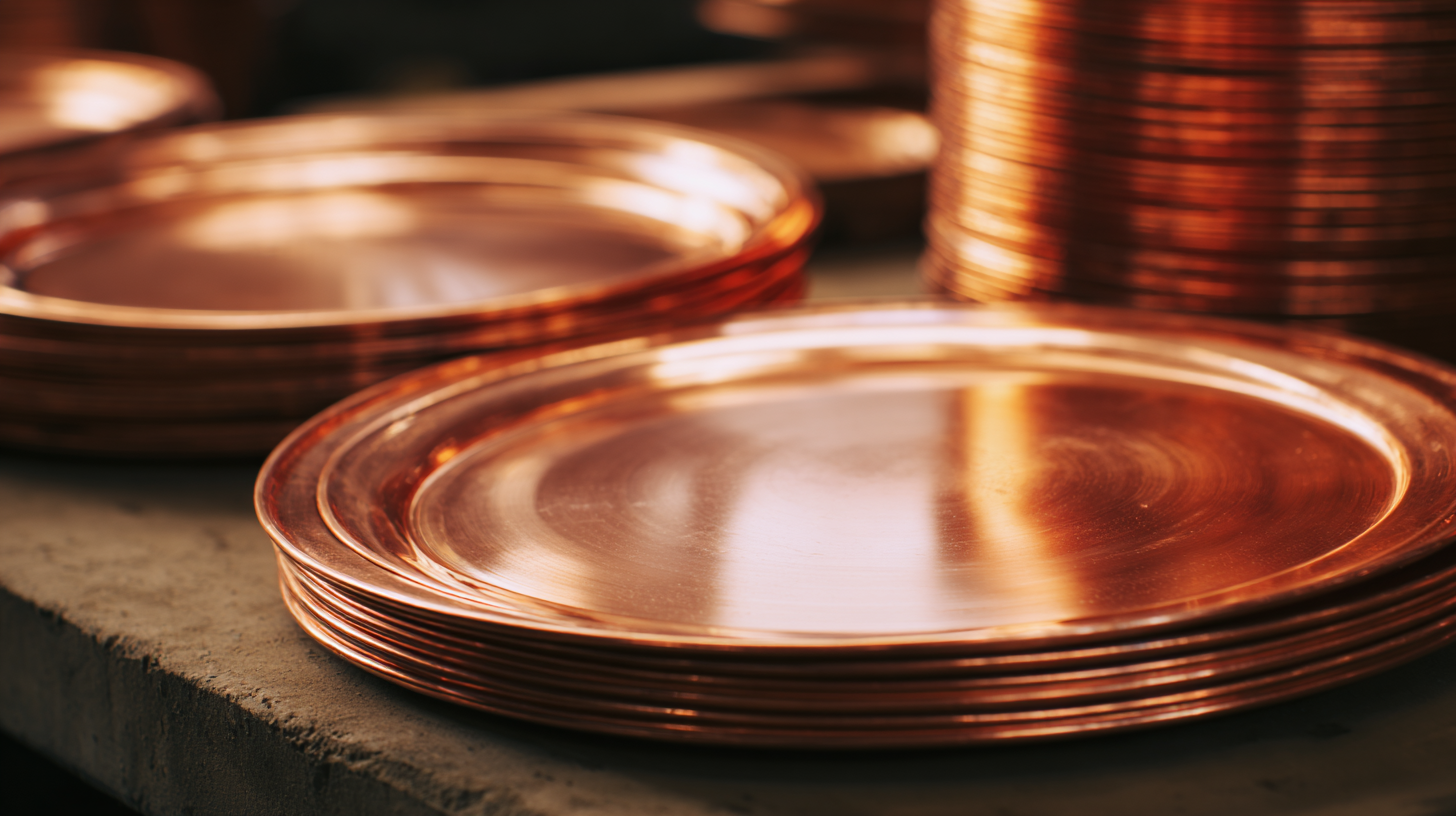In the ever-evolving world of manufacturing and engineering, sourcing the right materials is crucial for the success of any business. Among these materials, Copper Plates stand out due to their exceptional electrical conductivity, thermal properties, and resistance to corrosion. According to a recent market analysis by Mordor Intelligence, the global copper market is projected to reach $321 billion by 2026, with significant contributions from sectors like electronics, construction, and renewable energy. The diverse applications of Copper Plates, ranging from electrical circuits to architectural designs, underline the importance of understanding the various types available and their specific uses. This guide aims to navigate the complexities of choosing the best Copper Plates tailored to your business needs, ensuring you make informed decisions that enhance productivity and efficiency.

The rising demand for copper plates in global markets can be attributed to various factors, including the surge in electrical and electronic applications, construction, and renewable energy sectors. According to a report by Grand View Research, the global copper market is expected to reach $221.5 billion by 2025, growing at a CAGR of 4.2%. This demand is driven by the increasing need for efficient electrical conductivity in wiring and components, as well as the push for sustainable energy solutions, which often rely on copper for plumbing and photovoltaic systems.
When sourcing copper plates, it’s essential to consider quality and specifications. Always request certifications for the copper's purity and gauge to ensure it meets your project’s requirements. Tip: Engage with multiple suppliers to compare prices and quality. This can not only help you find the best deal but also give you insights into market trends and reliability.
Additionally, staying informed about global supply chain dynamics is crucial. Recent disruptions in mining and production due to political tensions and environmental policies can affect availability and pricing. Tip: Keep an eye on commodity forecasts and consider bulk purchasing strategies to mitigate risks associated with price fluctuations and supply shortages.
When sourcing copper plates for your business, it's essential to consider several key factors that influence their quality.
The purity of the copper is paramount; high-purity copper plates ensure better conductivity and durability. Make sure to inquire about the copper grade used, as this will directly affect the performance of your final product. Additionally, the manufacturing process—whether it's hot-rolled, cold-rolled, or electrolytically refined—plays a crucial role in the plates' characteristics.
Tips: Always request certification documents from your supplier to verify the copper grade and manufacturing standards. This can save you from future issues related to product performance and compliance with industry regulations.
Another important factor is the surface finish of the copper plates. A smooth, well-finished surface not only enhances aesthetic appeal but also improves the plates' resistance to corrosion. This becomes particularly important if your application involves exposure to harsh environments. Look for suppliers that offer various surface finishing options, allowing you to choose the one that aligns best with your needs.
Tips: Conduct a thorough visual inspection of samples before making a bulk purchase. This will help you assess the quality of the surface finish and determine if it meets your specific requirements.
When sourcing copper plates for your business, navigating the supply chain can be a daunting task, especially when looking for reliable manufacturers in China. The country is a global leader in copper production, boasting many manufacturers that offer a wide range of products. However, it's crucial to conduct thorough research to identify trustworthy suppliers who can meet your quality standards and delivery timelines. Start by utilizing online platforms like Alibaba and Made-in-China, where you can access a multitude of suppliers, read reviews, and compare prices.

Building relationships is key in the Chinese manufacturing landscape. Once you've shortlisted potential manufacturers, initiate contact to discuss your specific needs. Ask about their production capabilities, quality assurance processes, and willingness to provide samples. Establishing clear communication helps in fostering trust and understanding their operational practices. Additionally, consider visiting the factories if possible or employing third-party inspection services to verify the quality of the products before placing a significant order. This proactive approach will ensure that you secure the best copper plates for your business while mitigating potential risks associated with international sourcing.
When evaluating copper plates for your business, a comparative analysis between Chinese manufacturers and global competitors reveals significant differences in quality, pricing, and supply chain reliability. According to a report by MarketsandMarkets, the global market for copper plates is expected to reach $6 billion by 2026, with a substantial portion of that growth driven by Chinese suppliers. Chinese copper plates are often favored for their competitive pricing, which can be up to 20% lower than those from Western countries. This cost advantage is primarily due to lower production costs and government subsidies in China.

However, it is essential to consider quality and certification standards. A recent study from the International Copper Association found that over 30% of Chinese copper products do not meet stringent international quality standards, particularly in industries such as electronics and aerospace. In contrast, European and American manufacturers typically maintain higher certifications and quality control measures, ensuring that their copper plates meet all required specifications. Businesses must weigh these factors against their specific needs, considering whether cost-efficient sourcing or stringent quality standards align better with their operational goals.
Sustainability practices in copper plate manufacturing are increasingly vital, especially in major production hubs like China. Given the environmental concerns associated with metal processing, manufacturers are now adopting greener techniques to mitigate their ecological footprint. This includes employing energy-efficient machinery and utilizing renewable energy sources to power factory operations. Additionally, many companies are implementing closed-loop water systems that recycle and reuse water, significantly reducing waste and contaminant discharge into local waterways.
Another critical aspect is the sourcing of raw materials. Ethical procurement of copper is becoming a standard practice among forward-thinking companies in China. By ensuring that their copper supply chains are conflict-free and environmentally responsible, manufacturers not only comply with global standards but also cater to a growing market demand for sustainable products.
Furthermore, these companies are increasingly investing in research and development to enhance the recyclability of their copper plates, thereby contributing to a circular economy that prioritizes waste reduction and resource efficiency. Through such innovations and responsible practices, the copper plate industry can balance profitability with environmental stewardship, positioning itself for a sustainable future.



